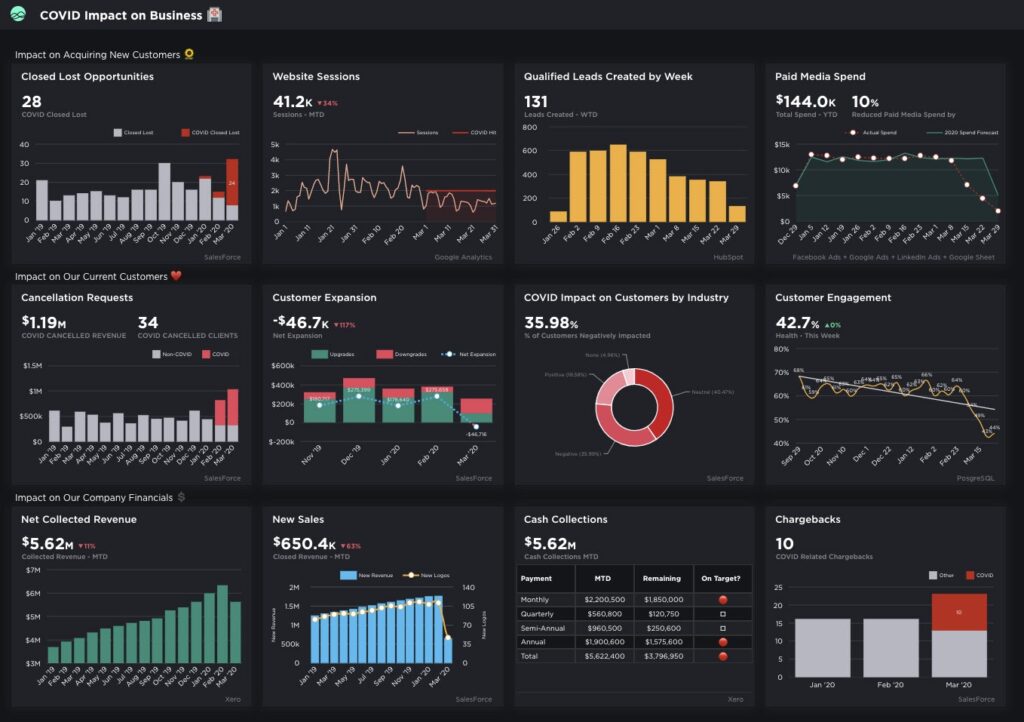
What is a business intelligence dashboard? A business intelligence (BI) dashboard is a visual representation of key performance indicators (KPIs) and other relevant data that provides a comprehensive view of a business’s performance.
Editor’s Note: Business intelligence dashboards have become increasingly important in today’s data-driven business environment. By providing a centralized view of key metrics, dashboards can help businesses track their progress, identify trends, and make informed decisions.
To help you understand the power of business intelligence dashboards, we’ve put together this comprehensive guide. In this guide, we’ll cover the following topics:
Key differences between business intelligence dashboards and traditional reports
The benefits of using business intelligence dashboards
How to create a business intelligence dashboard
Best practices for using business intelligence dashboards
Whether you’re a business owner, manager, or analyst, this guide will provide you with the information you need to get started with business intelligence dashboards and improve your decision-making process.
Business Intelligence Dashboard
Business intelligence dashboards are essential tools for businesses of all sizes. They provide a centralized view of key performance indicators (KPIs) and other relevant data, allowing businesses to track their progress, identify trends, and make informed decisions.
- Real-time data: Dashboards can display real-time data, giving businesses up-to-date insights into their performance.
- Customization: Dashboards can be customized to meet the specific needs of each business.
- Drill-down capabilities: Dashboards allow users to drill down into the data to get more detailed information.
- Visual presentation: Dashboards use visual elements such as charts and graphs to make data easy to understand.
- Shareability: Dashboards can be shared with other users, making it easy to collaborate on decision-making.
- Actionable insights: Dashboards provide actionable insights that can help businesses improve their performance.
- Improved decision-making: Dashboards help businesses make better decisions by providing them with the information they need to understand their performance and identify opportunities.
- Increased efficiency: Dashboards can help businesses improve efficiency by providing them with the information they need to make quick and informed decisions.
- Competitive advantage: Dashboards can give businesses a competitive advantage by providing them with the insights they need to stay ahead of the competition.
- Improved customer satisfaction: Dashboards can help businesses improve customer satisfaction by providing them with the insights they need to identify and resolve customer issues.
These are just a few of the key aspects of business intelligence dashboards. By understanding these aspects, businesses can use dashboards to improve their performance and gain a competitive advantage.
Real-time data
Real-time data is essential for businesses that want to stay ahead of the competition. By providing up-to-date insights into performance, real-time data can help businesses identify trends, make informed decisions, and respond quickly to changes in the market.
Business intelligence dashboards are a powerful tool for visualizing and analyzing real-time data. By integrating data from multiple sources, dashboards can provide a comprehensive view of a business’s performance. This information can be used to identify areas for improvement, track progress towards goals, and make better decisions.
Here are some examples of how real-time data can be used to improve business performance:
- Retail: Retailers can use real-time data to track sales, inventory levels, and customer behavior. This information can be used to identify trends, optimize pricing, and improve customer service.
- Manufacturing: Manufacturers can use real-time data to monitor production processes, identify bottlenecks, and improve quality control. This information can be used to increase efficiency, reduce costs, and improve product quality.
- Healthcare: Healthcare providers can use real-time data to track patient vitals, monitor treatment progress, and identify potential complications. This information can be used to improve patient care, reduce costs, and improve outcomes.
Real-time data is a valuable asset for businesses of all sizes. By using business intelligence dashboards to visualize and analyze real-time data, businesses can gain a competitive advantage and improve their performance.
Customization
Customization is a key feature of business intelligence dashboards. It allows businesses to tailor their dashboards to meet their specific needs and requirements. This is important because every business is different and has its own unique set of KPIs and data that it needs to track. A customized dashboard can help businesses to focus on the metrics that are most important to them and to present the data in a way that is easy to understand and use.
For example, a retail business might want to create a dashboard that tracks sales, inventory levels, and customer behavior. A manufacturing business might want to create a dashboard that tracks production processes, quality control, and equipment performance. A healthcare provider might want to create a dashboard that tracks patient vitals, treatment progress, and patient satisfaction.
By customizing their dashboards, businesses can ensure that they are getting the most out of their data and that they are able to make informed decisions based on the information that is most relevant to them.
Here are some of the benefits of customizing business intelligence dashboards:
- Improved focus: Custom dashboards allow businesses to focus on the metrics that are most important to them.
- Increased efficiency: Custom dashboards can be designed to be easy to use and understand, which can save businesses time and effort.
- Better decision-making: Custom dashboards can provide businesses with the information they need to make informed decisions.
If you are considering using a business intelligence dashboard, it is important to choose a solution that is customizable to meet your specific needs. This will ensure that you are getting the most out of your investment and that you are able to use the dashboard to improve your business performance.
Drill-down capabilities
Drill-down capabilities are an essential feature of business intelligence dashboards. They allow users to explore the data in more detail, identify trends, and uncover hidden insights. This is important because it allows businesses to gain a deeper understanding of their data and make more informed decisions.
- Data exploration: Drill-down capabilities allow users to explore the data in more detail. This can be useful for identifying trends, patterns, and outliers.
- Trend analysis: Drill-down capabilities can be used to analyze trends over time. This can be useful for identifying areas of growth or decline.
- Uncovering hidden insights: Drill-down capabilities can help users to uncover hidden insights in the data. This can be useful for identifying opportunities or risks.
Here are some examples of how drill-down capabilities can be used in business intelligence dashboards:
- A retail business might use drill-down capabilities to analyze sales data by region, product category, or customer type.
- A manufacturing business might use drill-down capabilities to analyze production data by product line, machine, or shift.
- A healthcare provider might use drill-down capabilities to analyze patient data by diagnosis, treatment, or provider.
Drill-down capabilities are a powerful tool for businesses of all sizes. They can help businesses to gain a deeper understanding of their data, identify trends, and make more informed decisions.
Visual presentation
Visual presentation is an essential aspect of business intelligence dashboards. By using visual elements such as charts and graphs, dashboards can make data easy to understand and identify trends, patterns, and outliers. This is important because it allows businesses to gain a deeper understanding of their data and make more informed decisions.
- Charts: Charts are a powerful way to visualize data and identify trends. For example, a line chart can be used to track sales over time, while a bar chart can be used to compare different product categories.
- Graphs: Graphs are another effective way to visualize data. For example, a scatter plot can be used to identify correlations between different variables, while a pie chart can be used to show the distribution of data.
- Maps: Maps can be used to visualize data geographically. For example, a heat map can be used to show the distribution of sales by region, while a bubble map can be used to show the location of customers.
- Gauges: Gauges can be used to track progress towards a goal. For example, a gauge can be used to track sales targets or customer satisfaction levels.
By using a variety of visual elements, dashboards can make data easy to understand and identify trends, patterns, and outliers. This is important because it allows businesses to gain a deeper understanding of their data and make more informed decisions.
Shareability
Shareability is a key feature of business intelligence dashboards. It allows multiple users to access and interact with the same dashboard, making it easy to collaborate on decision-making. This is important because it enables businesses to make better decisions by leveraging the collective knowledge and expertise of their team.
- Improved collaboration: Shared dashboards foster collaboration by providing a central platform for users to share insights and ideas.
- Increased transparency: Shared dashboards increase transparency by making data and insights accessible to all stakeholders.
- Better decision-making: Shared dashboards improve decision-making by enabling users to leverage the collective knowledge and expertise of their team.
Here are some examples of how shareable dashboards can be used to improve collaboration and decision-making:
- A marketing team can use a shared dashboard to track campaign performance and collaborate on marketing strategies.
- A sales team can use a shared dashboard to track sales pipeline and collaborate on sales strategies.
- A customer service team can use a shared dashboard to track customer satisfaction and collaborate on customer service strategies.
Shareable dashboards are a powerful tool for businesses of all sizes. They can help businesses to improve collaboration, increase transparency, and make better decisions.
Actionable insights
Actionable insights are one of the most important benefits of business intelligence dashboards. By providing users with easy-to-understand visualizations of data, dashboards can help businesses to identify trends, patterns, and outliers that would be difficult to spot otherwise. This information can then be used to make better decisions, improve processes, and ultimately improve performance.
For example, a retail business might use a dashboard to track sales data. The dashboard could show the total number of sales, the average sale price, and the number of sales by product category. This information could then be used to identify trends in sales, such as which products are selling well and which products are not selling well. This information could then be used to make better decisions about product placement, pricing, and marketing campaigns.
Another example of how actionable insights can be used to improve performance is in the manufacturing industry. A manufacturing business might use a dashboard to track production data. The dashboard could show the total number of units produced, the average production time, and the number of defects. This information could then be used to identify trends in production, such as which products are being produced efficiently and which products are causing problems. This information could then be used to make better decisions about production scheduling, quality control, and employee training.
Actionable insights are essential for businesses that want to improve their performance. By providing users with easy-to-understand visualizations of data, business intelligence dashboards can help businesses to identify trends, patterns, and outliers that would be difficult to spot otherwise. This information can then be used to make better decisions, improve processes, and ultimately improve performance.
Improved decision-making
Business intelligence dashboards are essential for businesses that want to make better decisions. By providing users with easy-to-understand visualizations of data, dashboards can help businesses to identify trends, patterns, and outliers that would be difficult to spot otherwise. This information can then be used to make better decisions, improve processes, and ultimately improve performance.
For example, a retail business might use a dashboard to track sales data. The dashboard could show the total number of sales, the average sale price, and the number of sales by product category. This information could then be used to identify trends in sales, such as which products are selling well and which products are not selling well. This information could then be used to make better decisions about product placement, pricing, and marketing campaigns.
Another example of how dashboards can be used to improve decision-making is in the manufacturing industry. A manufacturing business might use a dashboard to track production data. The dashboard could show the total number of units produced, the average production time, and the number of defects. This information could then be used to identify trends in production, such as which products are being produced efficiently and which products are causing problems. This information could then be used to make better decisions about production scheduling, quality control, and employee training.
Dashboards are a powerful tool for businesses of all sizes. They can help businesses to improve decision-making, identify opportunities, and improve performance. Businesses that are not using dashboards are missing out on a valuable opportunity to improve their bottom line.
Key insights:
- Dashboards provide businesses with the information they need to make better decisions.
- Dashboards can help businesses to identify trends, patterns, and outliers that would be difficult to spot otherwise.
- Dashboards can be used to improve decision-making in all areas of business, including sales, marketing, manufacturing, and finance.
Challenges:
- One of the challenges of using dashboards is that they can be complex and difficult to use.
- Another challenge is that dashboards can be expensive to implement and maintain.
Practical applications:
- Dashboards can be used to improve decision-making in all areas of business.
- Dashboards can be used to track key performance indicators (KPIs) and identify areas for improvement.
- Dashboards can be used to communicate data and insights to stakeholders.
Increased efficiency
In today’s fast-paced business environment, it is more important than ever for businesses to be efficient. Business intelligence dashboards can help businesses improve efficiency by providing them with the information they need to make quick and informed decisions.
- Real-time data: Dashboards can display real-time data, giving businesses up-to-date insights into their performance. This information can be used to identify inefficiencies and make changes to improve performance.
- Customization: Dashboards can be customized to meet the specific needs of each business. This means that businesses can focus on the metrics that are most important to them and present the data in a way that is easy to understand and use.
- Drill-down capabilities: Dashboards allow users to drill down into the data to get more detailed information. This can be useful for identifying the root cause of problems and developing solutions.
- Visual presentation: Dashboards use visual elements such as charts and graphs to make data easy to understand. This can help businesses to quickly identify trends and patterns, and to make informed decisions.
By providing businesses with the information they need to make quick and informed decisions, dashboards can help to improve efficiency and performance. Businesses that are not using dashboards are missing out on a valuable opportunity to improve their bottom line.
Competitive advantage
In today’s fast-paced business environment, it is more important than ever for businesses to have a competitive advantage. Business intelligence dashboards can give businesses a competitive advantage by providing them with the insights they need to stay ahead of the competition.
There are many ways that business intelligence dashboards can give businesses a competitive advantage. For example, dashboards can help businesses to:
- Identify new opportunities
- Make better decisions
- Improve efficiency
- Reduce costs
- Increase customer satisfaction
By providing businesses with the insights they need to make better decisions, dashboards can help businesses to gain a competitive advantage and improve their bottom line.
Here are some real-life examples of how businesses have used dashboards to gain a competitive advantage:
- Amazon: Amazon uses dashboards to track key metrics such as sales, customer satisfaction, and inventory levels. This information helps Amazon to make better decisions about product pricing, inventory management, and customer service.
- Walmart: Walmart uses dashboards to track sales data and customer behavior. This information helps Walmart to identify new opportunities, such as new product lines and new store locations.
- Google: Google uses dashboards to track key metrics such as search traffic, ad revenue, and user engagement. This information helps Google to make better decisions about product development, marketing campaigns, and customer service.
These are just a few examples of how businesses have used dashboards to gain a competitive advantage. By providing businesses with the insights they need to make better decisions, dashboards can help businesses to improve their performance and stay ahead of the competition.
Key insights:
- Business intelligence dashboards can give businesses a competitive advantage by providing them with the insights they need to stay ahead of the competition.
- Dashboards can help businesses to identify new opportunities, make better decisions, improve efficiency, reduce costs, and increase customer satisfaction.
- Businesses that use dashboards are more likely to be successful than businesses that do not use dashboards.
Challenges:
- One of the challenges of using dashboards is that they can be complex and difficult to use.
- Another challenge is that dashboards can be expensive to implement and maintain.
Practical applications:
- Dashboards can be used to improve decision-making in all areas of business.
- Dashboards can be used to track key performance indicators (KPIs) and identify areas for improvement.
- Dashboards can be used to communicate data and insights to stakeholders.
Improved customer satisfaction
Customer satisfaction is a key metric for any business. Businesses that have high levels of customer satisfaction are more likely to retain customers, generate repeat business, and earn positive word-of-mouth. Business intelligence dashboards can help businesses improve customer satisfaction by providing them with the insights they need to identify and resolve customer issues.
There are many ways that business intelligence dashboards can help businesses improve customer satisfaction. For example, dashboards can help businesses to:
- Track customer feedback
- Identify common customer issuesAnalyze customer churn
- Resolve customer issues quickly and efficiently
By providing businesses with the insights they need to improve customer satisfaction, dashboards can help businesses to build stronger relationships with their customers and increase their bottom line.
Here is a real-life example of how a business used a dashboard to improve customer satisfaction:
- Acme Corporation: Acme Corporation is a large manufacturing company. Acme Corporation used a dashboard to track customer feedback, identify common customer issues, and resolve customer issues quickly and efficiently. As a result, Acme Corporation was able to improve customer satisfaction by 15%.
The connection between improved customer satisfaction and business intelligence dashboards is clear. Dashboards provide businesses with the insights they need to identify and resolve customer issues, which leads to improved customer satisfaction. Businesses that are serious about improving customer satisfaction should consider using a business intelligence dashboard.
Key insights:
- Business intelligence dashboards can help businesses improve customer satisfaction.
- Dashboards provide businesses with the insights they need to identify and resolve customer issues.
- Businesses that use dashboards are more likely to have high levels of customer satisfaction.
Challenges:
- One of the challenges of using dashboards is that they can be complex and difficult to use.
- Another challenge is that dashboards can be expensive to implement and maintain.
Practical applications:
- Dashboards can be used to track key customer satisfaction metrics such as customer satisfaction scores, customer churn rates, and customer feedback.
- Dashboards can be used to identify common customer issues and trends.
- Dashboards can be used to resolve customer issues quickly and efficiently.
Frequently Asked Questions about Business Intelligence Dashboards
Business intelligence dashboards are a powerful tool for businesses of all sizes. They can provide valuable insights into a company’s performance, helping businesses to make better decisions, improve efficiency, and gain a competitive advantage.
Question 1: What is a business intelligence dashboard?
A business intelligence dashboard is a visual representation of key performance indicators (KPIs) and other relevant data that provides a comprehensive view of a business’s performance.
Question 2: What are the benefits of using a business intelligence dashboard?
Business intelligence dashboards offer numerous benefits, including improved decision-making, increased efficiency, reduced costs, and enhanced customer satisfaction.
Question 3: How can I create a business intelligence dashboard?
Creating a business intelligence dashboard requires gathering relevant data, choosing appropriate visualization tools, and designing an effective layout.
Question 4: What are some best practices for using business intelligence dashboards?
Best practices for using business intelligence dashboards include regularly updating the data, setting clear goals, and involving stakeholders in the design process.
Question 5: How can I measure the success of my business intelligence dashboard?
Measuring the success of a business intelligence dashboard involves tracking relevant metrics, such as increased revenue, reduced costs, or improved customer satisfaction.
Question 6: What are the limitations of business intelligence dashboards?
While business intelligence dashboards are a valuable tool, they also have limitations, including the potential for data inaccuracy, the need for ongoing maintenance, and the challenge of presenting complex data in a clear and concise manner.
Summary: Business intelligence dashboards are a powerful tool for businesses of all sizes. By providing valuable insights into a company’s performance, dashboards can help businesses to make better decisions, improve efficiency, and gain a competitive advantage.
Transition to the next article section: To learn more about business intelligence dashboards, including how to create and use them effectively, please refer to the following resources:
- Business Intelligence Dashboards: A Comprehensive Guide
- How to Create a Business Intelligence Dashboard
- Best Practices for Using Business Intelligence Dashboards
Business Intelligence Dashboard Tips
Business intelligence dashboards are a powerful tool for businesses of all sizes. They can provide valuable insights into a company’s performance, helping businesses to make better decisions, improve efficiency, and gain a competitive advantage.
Here are five tips for using business intelligence dashboards effectively:
Tip 1: Define your goals and objectives.
Before you start creating your dashboard, it’s important to define your goals and objectives. What do you want to achieve with your dashboard? Do you want to track key performance indicators (KPIs), identify trends, or analyze customer behavior? Once you know your goals, you can start to design your dashboard accordingly.
Tip 2: choose the right data.
The data you choose to include on your dashboard is critical. It should be relevant to your goals and objectives, and it should be accurate and up-to-date. If your data is not accurate or up-to-date, your dashboard will not be able to provide you with valuable insights.
Tip 3: Use visual elements to make your data easy to understand.
Visual elements, such as charts and graphs, can help you to make your data easy to understand. They can help you to identify trends, patterns, and outliers. When choosing visual elements, keep your audience in mind. What types of visuals will they be most likely to understand?
Tip 4: Keep your dashboard simple.
It’s important to keep your dashboard simple and easy to use. Avoid cluttering your dashboard with too much data or too many visual elements. Your dashboard should be easy to navigate and understand at a glance.
Tip 5: Share your dashboard with others.
Once you’ve created your dashboard, share it with others in your organization. Your dashboard can be a valuable tool for everyone in your company, from executives to front-line employees. By sharing your dashboard, you can help others to make better decisions and improve their performance.
By following these tips, you can create a business intelligence dashboard that is effective and valuable.
Conclusion
Business intelligence dashboards are a powerful tool for businesses of all sizes. They can provide valuable insights into a company’s performance, helping businesses to make better decisions, improve efficiency, and gain a competitive advantage.
In this article, we have explored the key aspects of business intelligence dashboards, including their benefits, limitations, and best practices for use. We have also provided tips for creating effective business intelligence dashboards.
By following the tips and advice in this article, you can create a business intelligence dashboard that is tailored to your specific needs and that will help you to improve your business performance.
Youtube Video:






